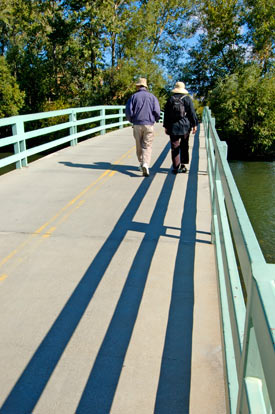 There’s a school of thought in physics that the era of great discoveries by individuals – the Newtons and Einsteins, if you will—has passed. Current knowledge is so complex and so voluminous that the only way forward will be through the collaborative work of many individuals—teams. Planning healthy, livable communities has taken on these characteristics. The days of Frederick Law Olmsted and Robert Moses have long since passed and in their places teams of planners in the fields of transportation, the environment, architecture, health, education and, of course, parks are making great strides in developing livable communities.
There’s a school of thought in physics that the era of great discoveries by individuals – the Newtons and Einsteins, if you will—has passed. Current knowledge is so complex and so voluminous that the only way forward will be through the collaborative work of many individuals—teams. Planning healthy, livable communities has taken on these characteristics. The days of Frederick Law Olmsted and Robert Moses have long since passed and in their places teams of planners in the fields of transportation, the environment, architecture, health, education and, of course, parks are making great strides in developing livable communities.
Maggie Cooper, Health and Wellness/CDC Programs Manager at the National Recreation and Park Association, expresses the role of parks best in her article in the April issue of Parks & Recreation (“Partnering with Planners to Create Active Living.”) Quoting U.S. Transportation Secretary Ray LaHood on the creation of livable communities, Cooper writes:
“Livability means a community where you can take kids to school, go to work, see a doctor, go to the grocery store, have dinner and a movie, and play with your kids in the park, all without having to get into a car.”
It’s all about rethinking the sedentary lifestyles of Americans.
“To achieve the goal of healthier, more livable communities, park professionals need to be at the table for all projects that could improve public health,” Cooper writes.
That’s no small order. But time and again, parks are demonstrating their integral role in transforming communities. In Fallon, Missouri; Newport, Rhode Island; and Greenville, South Carolina, parks are playing a key role in improving transportation and healthy living, Cooper writes. In Fallon, for example, the parks department led a coalition working with town planners to inventory and ultimately link streets, sidewalks, and trails. It’s an endeavor no single agency could have achieved on its own. Maybe 50 years ago, a towering individual could have made an attempt to decree it. But needs and knowledge in town planning, like physics, have evolved far beyond the scope of one individual.
Easy? No. Smart? Absolutely.
Phil Hayward is the Editor for Parks & Recreation magazine.

